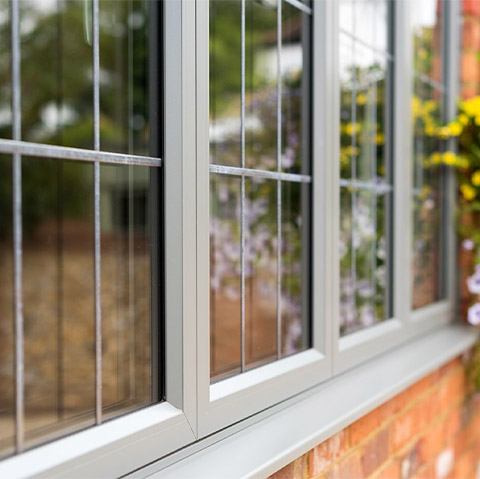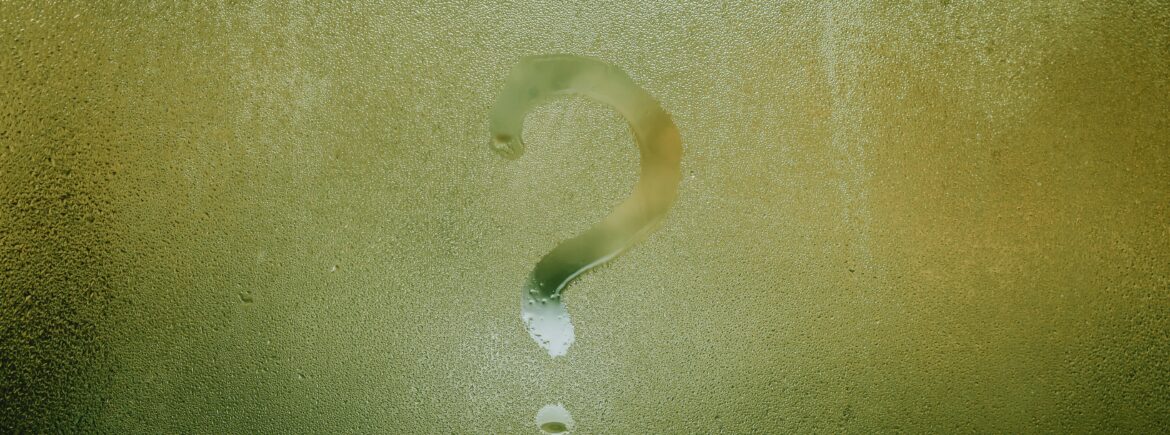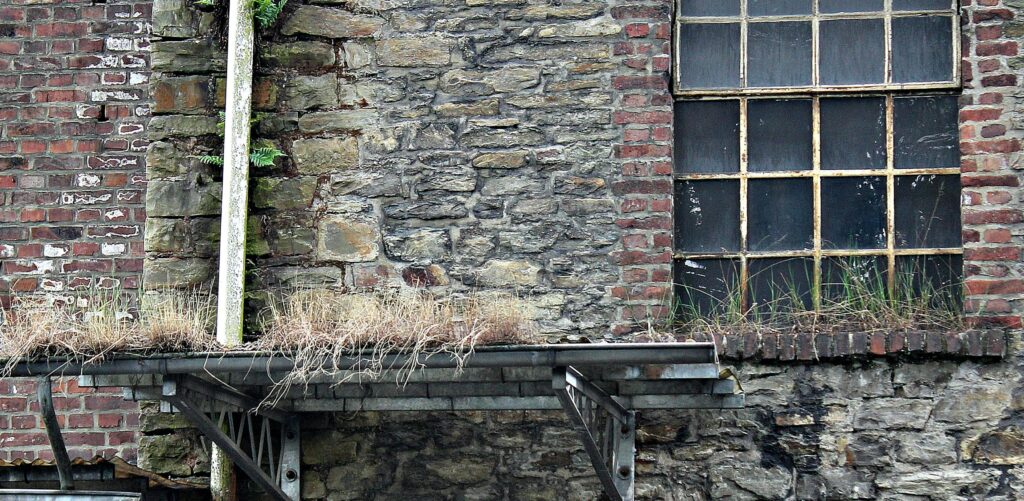Condensation on Windows? Stamford Window Experts Explain Why
Condensation on windows is a common challenge for homeowners in Stamford and throughout Lincolnshire, especially during the colder months.
This issue often appears as foggy or misty window panes, water droplets trickling down the glass, or even black mould forming near the frames.
While it may seem harmless at first, window condensation can lead to significant problems, including damage to window frames, reduced energy efficiency, and potential health risks from mould.
You might notice water droplets forming on your window panes, or worse, black mould around your frames.
Left unchecked, this can lead to damage to window frames, increased energy bills, and an unhealthy indoor environment.
The good news?
There are effective ways to manage and prevent condensation.
From improving ventilation to upgrading to energy-efficient windows, understanding the problem is the first step to a solution.
In this guide, we’ll explore what causes condensation on windows, how to recognise the signs, and what Stamford residents can do to tackle the problem effectively.
What does window condensation look like?
Condensation occurs when warm, moist air comes into contact with a colder surface, such as a window pane. This causes the moisture in the air to turn into liquid droplets as the gaseous air cools.
While condensation might seem like a minor inconvenience, the visible signs can indicate underlying problems.
 Fogged-up windows
Fogged-up windows
If your window panes appear cloudy or foggy, this is another clear indicator of condensation.
The foggy appearance often makes it difficult to see through the glass, reducing natural light and creating a dreary indoor environment.
Streaks or smears
As the moisture on your windows evaporates, it can leave behind streaks or smudges.
These marks can make the glazed window look dirty and may require frequent cleaning to maintain clear visibility.
Mould and mildew growth
In areas where condensation is persistent, you might notice black mould or mildew forming on or near the window frame.
This mould often appears as dark spots, particularly around wooden window frames or corners where moisture collects.
Water droplets
The most obvious sign of condensation is the formation of droplets of water on the glass surface.
These droplets are often small and bead-like, but in more severe cases, they can combine into larger drops and trickle down the glass.
This is most noticeable during the early morning in the winter months, especially when your home’s heating creates a significant temperature difference with the cooler air outside.
Water pooling
In severe cases, excess condensation can cause water pooling on your windowsills or floors. This can damage nearby soft furnishings or even lead to damp walls, which may require professional repairs.
Noticing these signs on your windows? Get in contact with us by booking a callback in the form below…
Still not sure? Keep reading.
Types of window condensation and what they mean
Condensation can occur in different ways. Understanding the type of window condensation in your Stamford home can help you address the issue effectively.
Interior condensation
Interior condensation forms on the inside of your windows.
It’s caused by high indoor humidity levels, often from household activities like cooking, showering, or drying clothes indoors.
This type of condensation buildup on windows is a sign that your home’s ventilation may be insufficient to manage the excess moisture in the air.
While interior condensation is common, especially in modern homes, it can lead to serious problems like mould growth, damp patches, and damage to window frames if not addressed.
Exterior condensation
Exterior condensation forms on the outside of the window glass, typically during cooler mornings.
This happens when the outside air cools the glass temperature, and water vapour from the atmosphere condenses on the surface.
This type of condensation is not a cause for concern.
In fact, it’s a sign that your double-glazed windows are working as intended by keeping the warmth inside your home. While it can temporarily obscure your view, exterior condensation doesn’t damage your window units or home.
Condensation between panes
If you notice condensation forming between the panes of glass in your double glazing unit, this indicates a broken sealed unit.
The edge seal of the window may have deteriorated, allowing moisture ingress into the sealed unit.
This type of condensation is problematic.
It reduces the thermal performance of your windows, leading to higher heating bills and a less comfortable home.
When this occurs, the only solution is to replace the affected double-glazed unit to restore its energy efficiency.

What’s the problem with condensation on windows?
At first glance, condensation on windows might seem like a minor issue, but it can lead to a variety of serious and costly problems. As a Stamford homeowner, if you notice water droplets or streaks on your windows, you need to consider that the impact goes beyond the surface.
From mould spores to higher energy costs, condensation issues can affect your home’s structure, health, and comfort.
Mould and mildew growth
Condensation buildup creates the ideal environment for mould and mildew.
When excessive moisture accumulates on internal surfaces, especially near window frames, it becomes a breeding ground for mould.
The moisture from condensation combined with poor airflow allows mould spores to spread rapidly, particularly on wooden window frames or absorbent areas.
Mould is a serious health risk.
It can worsen respiratory conditions, trigger asthma symptoms, and cause skin irritations. For families with children or those with weakened immune systems, these health concerns are even more significant.
Not only that, but it can also have structural impacts.
Prolonged exposure to mould damages absorbent materials, including walls, curtains, and soft furnishings, leading to additional repair costs.
Look for black or green spots, often in corners or along the edges of your glazed window.
If you notice this, it’s time to call Aperture Window Group to assess whether it’s an issue that needs replacement windows.
Damage to wooden frames
Homes with wooden window frames are particularly vulnerable to the effects of moisture buildup. When condensation forms regularly on or near the frame, it can cause the wood to absorb water.
This weakens the material over time, leading to rot and decay.
Weakened frames reduce the stability of the window unit, making it less secure. Weakening the window can also potentially compromise the window seals.
Look for soft or crumbling wood, visible discoloration, or warped frames. The presence of a musty smell near the windows can also indicate rot.
Rotting frames will often require full replacement windows. Try to catch this issue early or it’ll spread, making replacements expensive if multiple windows are affected.
Peeling paint and blistering
The excess moisture caused by condensation doesn’t just damage the frame. It also affects surrounding surfaces. If you notice damp walls or paint that’s peeling, blistering, or bubbling, it’s likely a result of ongoing condensation issues.
Look out for flaking paint, uneven wall texture, or small bubbles forming under the paint layer.
If you don’t deal with this early, peeling paint and damaged walls reduce the overall appeal of your living spaces, making them look neglected.
What’s worse is that persistent moisture can seep deeper into the wall. This weakens its structure and causes damp patches. This can also create ideal conditions for bacteria growth and mould.
Energy inefficiency
One of the biggest problems with condensation on windows is its link to poor insulation and reduced energy efficiency. When condensation is present, it’s often a sign of a colder surface on the glass pane, which means heat is escaping from your home.
For starters, the presence of cold glass during the winter months indicates that your windows are failing to retain heat. This forces your heating system to work harder to maintain a comfortable indoor temperature.
The more you use your heating, the higher the energy costs during colder seasons. Inefficient windows only add to the expense.
And it’s not just higher energy bills. Inefficient windows create drafts and uneven indoor air quality, making your home feel less comfortable.
Structural Damage
Persistent condensation can lead to more serious structural problems in your home.
Liquid water pooling at the base of your windows can seep into the surrounding structure, causing damage that might not be immediately visible.
Moisture can affect timber floors, skirting boards, and even the foundation near your windows.
Excessive moisture can also deteriorate the edge seal of your double-glazed unit, reducing its thermal performance and lifespan.
Ignoring condensation can result in the need for extensive repairs, from window replacement to addressing structural damage in your walls or flooring.
The Bigger Picture for Stamford Homes
In Stamford and surrounding areas in Lincolnshire, homes face unique environmental challenges during the colder months.
Older homes often have single or old double windows. These windows are more likely to get condensation.
 Additionally, high indoor humidity levels during colder weather further contribute to the likelihood of condensation forming.
Additionally, high indoor humidity levels during colder weather further contribute to the likelihood of condensation forming.
Addressing condensation issues promptly can help protect your home. It improves its energy efficiency and prevents long-term damage.
Whether you need to manage humidity levels or upgrade to modern double-glazed windows, taking action now can save your Stamford home from more extensive repairs later.
What causes condensation on windows?
Condensation is a common issue for homeowners, especially in Stamford and the Lincolnshire region during the colder months.
It often forms when warm, moist air comes into contact with cold glass panes, but several factors can make it worse.
Understanding these causes is key to finding effective solutions for reducing or preventing condensation.
The science of condensation
At its core, condensation occurs due to the interaction between moisture, temperature, and surface materials.
When warm air laden with water vapour meets a colder surface, such as a window pane, the air cools rapidly. This cooling reduces the air’s ability to hold moisture, causing the excess to form visible water droplets.
The glass surface temperature plays a critical role in this process.
On single-glazed windows or poorly insulated glass, condensation is more likely to form because these materials offer little resistance to temperature changes.
Double-glazed windows, by contrast, maintain a more stable surface temperature, reducing the likelihood of condensation forming.
Environmental factors that cause condensation
Certain environmental conditions can make condensation worse, particularly during the winter months when outdoor temperatures drop significantly.
These factors aren’t constant but can contribute to temporary bouts of condensation on windows.
High indoor humidity levels
Daily activities like cooking, boiling kettles, taking showers, or drying clothes indoors release large amounts of water vapour into the air.
Without adequate airflow, this excess moisture settles on the nearest cold surface — often your glazed windows.
This will appear as water droplets or fogging on the window glass, especially in kitchens, bathrooms, or laundry areas.
You can try using extractor fans and dehumidifiers to ensure adequate ventilation to help reduce indoor humidity levels.
Temperature difference between indoors and outdoors
A stark temperature difference between your warm home and the cold outside air creates the perfect conditions for condensation.
This is especially noticeable during winter when heated air inside meets the cooler surface temperature of your windows.
Try to keep a consistent indoor temperature. Upgrading to modern windows will also reduce this effect.
Seasonal shifts and how they affect condensation
During the summer months, warm outdoor air can increase indoor humidity levels, while cooler temperatures at night cause condensation to form.
Similarly, during winter, prolonged use of central heating creates significant temperature differences, exacerbating condensation.
Seasonal adjustments to ventilation and heating settings can help mitigate condensation.
Inadequate ventilation
Poor airflow is one of the leading causes of condensation issues. Without a way for moisture-laden air to escape, it accumulates on cold window panes and other surfaces.
You might notice persistent fogging or condensation buildup in rooms without bathroom fans, trickle vents, or openable windows.
To help with this, install mechanical ventilation systems or use natural ventilation methods like opening windows regularly. Window vents can also provide a passive way to maintain airflow. If your windows are broken and won’t open, you’ll need to replace them
Poor insulation from single-pane windows
Homes with single-glazed windows are far more prone to condensation than those with double glazing. The reason lies in the lack of an additional layer of insulation.
Single-glazed windows allow heat to escape easily, leaving the glass surface cold. Warm air inside your home condenses on this cold glass, forming water droplets.
Double glazing windows have an extra layer of insulation, often filled with argon gas, that keeps the interior glass warmer. This reduces the chance of condensation and improves overall energy efficiency.
Upgrading from single glazing to double glazing is one of the most effective solutions for addressing condensation and lowering energy bills.
Issues with older windows
Older windows often have diminished insulation capabilities due to wear and tear, making them more susceptible to condensation.
Over time, the materials in older windows degrade, reducing their ability to retain heat and resist moisture buildup.
This shows up as persistent fogging, draughts near the window, and noticeable cold surfaces during winter.
In return, you’ll see higher energy costs, increased heat loss, and a less comfortable home environment.
For many Stamford homes, especially older properties with traditional architecture, replacing outdated windows with modern double glazing or timber double-glazing can resolve these issues while preserving the home’s aesthetic appeal.
Faulty window seals
A damaged or cracked seal in a double-glazed window is a common cause of condensation.
The sealed unit in double glazing is designed to keep the air gap between the panes of glass dry and free of moisture.
When the seal fails, moisture ingress occurs, leading to condensation inside the window.
This will compromise the window’s thermal performance and may require a replacement double-glazed unit.
It’s likely a broken seal if you see persistent fogging or condensation between window panes that cannot be wiped away.
You’ll need to replace the sealed unit to restore the window’s insulation properties and prevent further condensation.
Damaged window frames
The condition of your window frames plays a significant role in whether condensation becomes a problem. Poorly constructed or damaged frames allow air to seep in, causing the window’s surface temperature to drop and encouraging condensation forms.
You’ll need to contact Aperture Window Group if you notice visible cracks, warping, or gaps around the frame. For wooden window frames, also looks for signs of rot.
Damaged frames not only reduce your home’s energy efficiency but also create additional points for moisture buildup and mould growth.
You’ll need to repair or replace damaged frames with durable materials, such as uPVC or aluminium window frames, to ensure better insulation and reduce the likelihood of condensation forming.
What should Stamford residents do about window condensation?
If you’re dealing with condensation in your Stamford home, there are several steps you can take to address the problem.
Improve indoor humidity levels
Managing indoor humidity is key to preventing condensation.
Use dehumidifiers and ensure your home has adequate ventilation by installing extractor fans in kitchens and bathrooms.
Open windows when cooking or showering to let out excess moisture.
Maintain a stable temperature
Avoid large temperature fluctuations in your home by keeping your central heating on consistently during colder months.
This helps prevent the windows from becoming a cooler surface where moisture can collect.
Upgrade your windows with Aperture Window Group
If your windows are outdated or damaged, upgrading to double-glazed windows with modern features like low-E coatings and argon gas fill can make a significant difference.
Our highly-efficient windows offer better insulation, reducing the risk of condensation and lowering your heating bills.
Why replacing windows in your Stamford home might be the best option
New windows are designed to combat the factors that cause window condensation.
Modern double-glazed windows use advanced features like low-E coatings, sealed units, and argon gas fills to provide an effective barrier against cold surfaces.
This ensures the surface temperature of the window pane stays higher, even during the colder months, reducing the risk of water droplets forming.
Additionally, new double glazing units eliminate problems caused by faulty window seals and poor insulation, which are common in older windows.
By upgrading, Stamford homeowners can enjoy a significant reduction in moisture buildup and a more comfortable indoor environment.
The benefits of new windows in your Stamford home
Upgrading your windows offers more than just a solution to condensation.
Here are some of the key benefits Stamford residents can expect:
- Improved energy efficiency: Modern windows are far more efficient at retaining heat than older single-glazed windows. Features like multiple panes of glass, thermal insulation layers, and airtight seals prevent heat loss, reducing your heating bills. This is especially important in Stamford, where the colder months demand effective heating solutions.
- Better insulation: New windows provide an extra layer of insulation, making it harder for cold air to enter your home or for warm air to escape. This not only prevents condensation buildup but also improves your home’s comfort levels by eliminating drafts.
- Enhanced aesthetic appeal: Replacing worn or outdated windows instantly elevates the look of your home. New windows come in a variety of designs, from traditional sash windows to sleek, modern windows, allowing you to choose styles that complement your home’s architecture. This improvement can boost your property’s curb appeal and value.
Signs it’s time to replace your windows
If you’re unsure whether your windows need replacing, look for these clear indicators:
- Broken Seals: Visible signs of condensation between window panes are a key sign that the sealed unit has failed.
- Rotting Frames: Wooden window frames showing signs of rot or damage can no longer provide adequate insulation.
- Foggy or Hazy Glass: Persistent fogging, even after cleaning, suggests the need for new double-glazing windows.
- Higher Heating Bills: Older windows often lead to heat loss, increasing your energy costs unnecessarily.
- Drafts or Cold Spots: If you feel drafts near your windows, it’s a sign that the insulation is compromised.
Choosing the right replacement windows
Selecting the right windows for your Stamford home is crucial to solving condensation problems and improving energy efficiency.
Here are some features to look for when choosing replacement windows:
- Double or Triple Glazing: Provides excellent insulation and reduces the risk of condensation.
- Low-E Coating: Helps maintain the glass’s surface temperature, reducing the likelihood of condensation forming.
- Argon Gas Fill: Creates a barrier that enhances the window’s insulation capabilities.
- Durable Frames: Modern aluminium window frames or uPVC frames offer long-lasting protection against the elements.
To ensure the best results, talk to our design team to work out which solution will best fit your style and energy-efficiency needs.
Why choose Aperture Window Group to help with window condensation in your Stamford home
Aperture Window Group is a trusted name in Stamford and across Lincolnshire, offering tailored solutions to tackle condensation on windows.
With over 20 years of experience, we understand the unique needs of local homes and the importance of maintaining both functionality and charm.
Here’s why Stamford residents choose us:
 Energy-efficient designs
Energy-efficient designs
Our windows are designed with the latest technology to maximise energy efficiency and minimise condensation issues.
Features like low-E coatings and argon gas fills help maintain the glass’s surface temperature. This reduces the likelihood of condensation while keeping your home warm and your heating bills low.
Custom solution for Stamford homes
Stamford’s mix of traditional properties and modern builds requires a bespoke approach.
Whether you live in a historic Georgian home or a contemporary new build, we offer custom-sized windows that blend seamlessly with your property’s architecture while improving its thermal performance.
Choose from a variety of styles, including sash windows, bay windows, and sleek modern designs, all tailored to your needs.
Our team specialises in maintaining the unique charm of Stamford’s traditional homes while upgrading their functionality.
Durable, high-quality materials
We only use premium materials to ensure long-lasting results.
Our range includes:
- uPVC window frames: Known for their excellent insulation, durability, and low maintenance.
- Aluminium window frames: Perfect for homeowners seeking a modern look, offering strength, slim sightlines, and superior performance.
- Timber look frames: Provide the charm of traditional wood with the modern benefits of low-maintenance and energy efficiency.
- Hardwood frames: Crafted for timeless elegance and superior durability, ideal for preserving the character of period properties.
These materials are resistant to weathering and wear, ensuring your windows stay in top condition for years to come.
Professional installation and minimal disruption
A seamless installation process is key to a successful upgrade.
Our professional team is skilled in installing replacement windows with precision and care. WE make sure your home is left spotless and the work is completed with minimal disruption to your daily life.
We work around your schedule, completing installations efficiently without compromising on quality.
Exceptional customer service
At Aperture Window Group, we prioritise our customers.
From your first consultation to the final installation, our friendly team is on hand to answer questions, provide updates, and ensure your complete satisfaction.
- Trusted by Locals: With glowing reviews from Stamford residents, we’ve built a reputation for reliability and excellence.
- Transparent Quotes: We provide detailed, competitive quotes with no hidden fees, so you can make informed decisions.
- Aftercare: Our support doesn’t end after installation. We’re always available for advice, maintenance, or further improvements.
Local expertise you can rely on
Being based in Lincolnshire, we understand the local climate and architectural styles.
Whether it’s preserving the look of a period home or ensuring modern properties meet the highest energy efficiency standards, our team has the knowledge and experience to deliver results that Stamford homeowners trust.
Condensation on your windows? Let’s talk.
Upgrading your Stamford windows with Aperture Window Group means more than just solving condensation issues.
It’s about making your home more comfortable, energy-efficient, and beautiful while getting the best local knowledge and great customer service.
If you’ve noticed condensation on your windows, book a callback in the form opposite and talk to one of our experts about how we can help solve it.



